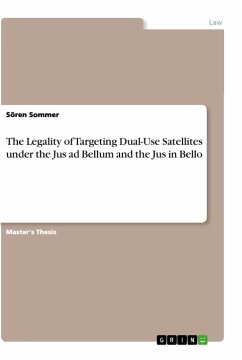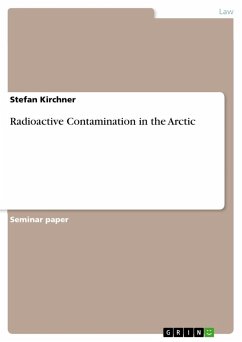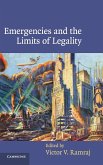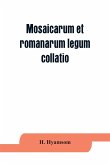Master's Thesis from the year 2019 in the subject Law - Miscellaneous, grade: A3, University of Glasgow, language: English, abstract: The ever-increasing reliance of modern societies and modern militaries on space assets, including dual-use satellites, also increases the likelihood that these systems will be targeted in future outer space conflicts, with potentially devastating humanitarian consequences. This thesis assesses the legality of targeting dual-use satellites under the jus ad bellum and the jus in bello spatialis. Under the jus ad bellum spatialis, consisting of the international outer space legal framework, the UN Charter and customary international law, States are prohibited from using force against other States' space objects, such as dual-use satellites. In case of armed conflict, the jus in bello spatialis regulates the manner in which dual-use satellites may be legitimately targeted in outer space. The targeting of dual-use satellites poses several unique challenges. Due to their dual-use purpose, dual-use satellites generally qualify as legitimate military objectives which can be lawfully targeted. This is cause for great humanitarian concern. Many satellites serve dual-use purposes and their disruption can have significant effects for the civilian population. The destruction of a dual-use satellite and the resulting space debris can have disastrous consequences for the highly fragile space environment. At the same time, the potential military advantage gained from an attack on a dual-use satellite might be so great that its disruption or destruction can still be considered to be proportionate to the anticipated collateral damage. Further challenging is that due to the lacking international registration regime and the confidential nature of security-related space activities, it is often difficult to make adequate proportionality and precautions assessments. The general prohibitions regarding means and methods of warfare also apply during outer space armed conflict and consequently, the use of kinetic ASAT weapons to target dual-use satellites is prohibited because their effects indiscriminately affect other (civilian) space objects and because they cause widespread, long-term and severe damage to the outer space environment.








